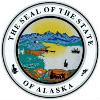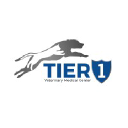JOB
This position is open to Alaska Residents only. Please check our residency definition to determine if you qualify.The Alaska Department of Fish and Game, Division of Wildlife Conservation is recruiting for a Wildlife Biologist 3 located in Palmer!What you will be doing: In this Wildlife Biologist 3 position, the incumbent will work collaboratively as part of the research team in Region IV of the Alaska Department of Fish and Game to evaluate critical management and ecological questions in large game mammals, with a focus on large carnivores, including wolves and brown bears. The incumbent will be responsible for working with wildlife managers to identify research questions and associated hypotheses and will lead development and execution of rigorous studies to evaluate those hypotheses, assist other researchers in project development and execution, and lead or contribute to development of new or evaluation of existing survey and inventory techniques. The incumbent will be responsible for contributing or leading all aspects of the study from beginning to end, including study design, logistics, data analysis, research presentations at professional meetings, writing of interim reports and final publications, and communicating the findings with wildlife managers, the Board of Game, the public, and other audiences.Our organization, mission, and culture: Under the Alaska Constitution and Alaska Statutes, the Alaska Department of Fish and Game is responsible for managing fish and wildlife species for the benefit of all people consistent with the sustained yield principle. Much of our work focuses on research to inform conservation and management of large game species in an effort to support subsistence and recreational harvest opportunities. This includes the preferential harvest of ungulates consistent with these laws. Benefits of joining our team: The incumbent will have opportunities to support science-based management and address applied and novel ecological questions with a focus on large carnivores. In collaboration with other research staff, the incumbent will have opportunities to contribute to research aimed at understanding topics such as apparent competition, denning ecology, nutritional ecology, movement ecology, population ecology, predator-prey interactions, and more. In addition to contributing to ongoing projects and developing new projects, the incumbent also will have opportunities to work on existing data spanning several decades. The incumbent will be joining a team with expertise in stable isotopes, physiology and nutrition, and biometrics. Publication is encouraged and expected of all members of the team and will be collaborative.The working conditions you can expect: The incumbent will conduct field work in remote parts of southcentral and southwestern Alaska, in some of the most scenic areas in the world. Field work can occur in all weather conditions and may require flying in small fixed-wing aircraft for many hours at a time or capturing animals via darting from a helicopter. Work from small boats and via ATVs or snowmachines also may be required to meet needs of specific projects. Some work may include extended stays in remote field camps to conduct vegetation sampling or other fieldwork. Incumbents will be exposed to biting insects, snow, wind, rain, continuous sun, and other hazardous conditions during fieldwork. Incumbents will be required to be certified to carry firearms and bear spray during field work. The incumbent will have a private office in Palmer to conduct analyses, writing, and other office work.Requires frequent travel for fieldwork (at least 10 days at a time at least twice a year)Who we are looking for: We are looking for a candidate who possesses some or all of the skills listed below.Experience developing and executing research projects from beginning to end, including development of research questions and hypotheses, study design, execution of data collection in remote field conditions or otherwise, data analysis, writing, and publishing in reputable, peer-reviewed journals.Experience analyzing animal location and movement data, such as for analyses of home ranges, habitat use and selection, migration analyses, range fidelity, etc. and/or experience collecting and analyzing population abundance and demographic data, including conducting aerial surveys and estimating abundance and population parameters and growth rates using techniques such as mark-resight, capture-mark-recapture, sightability, and integrated population models.Experience researching and publishing on predator-prey interactions or apparent competition.Experience analyzing large, complex datasets in R or other statistical software.Experience managing logistics for complex fieldwork in remote settings.To view the general description and example of duties for a Wildlife Biologist 3 please go to the following link: https://www.governmentjobs.com/careers/Alaska/classspecs Special Note: A valid driver's license is required.This position may be in possession of, or have access to, firearms/ammunition.
EXAMPLE OF DUTIES
A bachelor’s degree from an accredited college in biology, a branch of biology, limnology, biometrics, oceanography, forestry, or natural resource management;ANDOne year of full performance professional level biologist experience. The required professional biologist work experience is met by service as a Fishery Biologist 2, Wildlife Biologist 2, Habitat Biologist 2, or Fisheries Geneticist 1 with the State of Alaska or the equivalent with another employer.Substitution: A bachelor’s degree from an accredited college that includes or is supplemented by the following credit hours will substitute for the degree in a specific field: • at least 24 semester hours (36 quarter hours) in biology, a branch of biology, limnology, biometrics, oceanography, forestry, or natural resource management (excluding courses that focus on agricultural husbandry techniques, human population dynamics, or the design and manipulation of landscapes), of which 16 semester hours (24 quarter hours) are upper division courses; and• at least 12 semester hours (16 quarter hours) in any combination of two or more of the following: chemistry, physics, mathematics, statistics, geology, hydrology, or GIS.Special Note: “Upper division courses” means courses that are specialized, in-depth and advanced. Such courses emphasize problem-solving, analytical thinking skills, and theoretical applications, with depth and rigor in a discipline’s theories and methods; specialization in a particular field or profession; refinement of general education; and/or development of specific intellectual and professional skills. Upper division courses are commonly identified in college catalogs as 300 level and higher.Some positions may require training in specialized areas such as hydroacoustics, microscopic analysis, underwater research, or fish habitat restoration or enhancement.
SUPPLEMENTAL INFORMATION
For specific information in reference to the position please contact the hiring manager: Kristin DenryterWildlife Biologist 4, Research Coordinator307-343-6511Kristin.Denryter@alaska.gov


